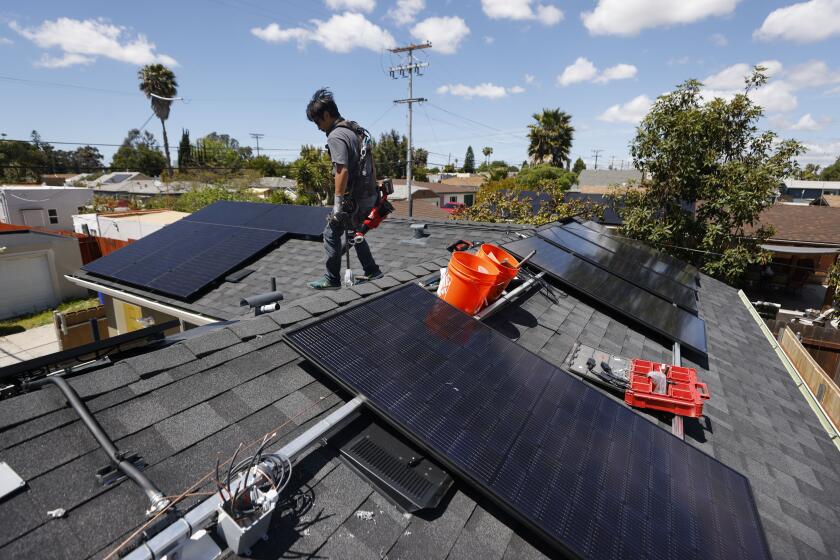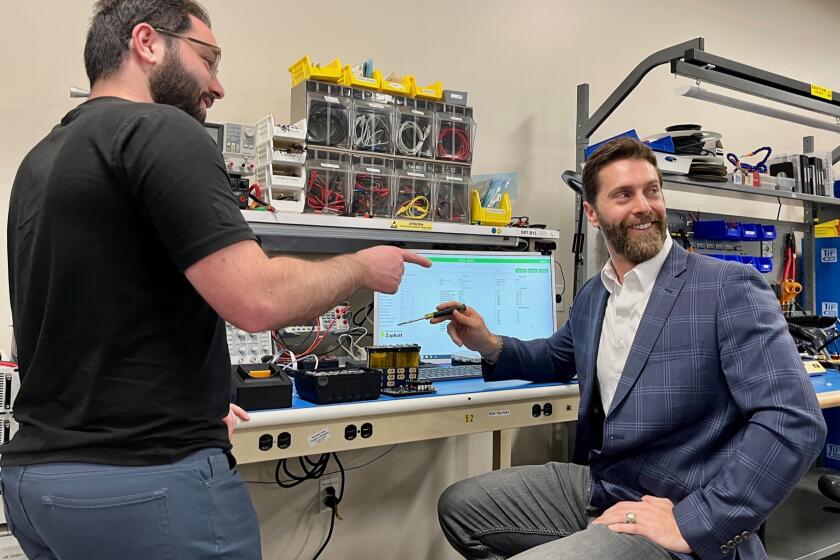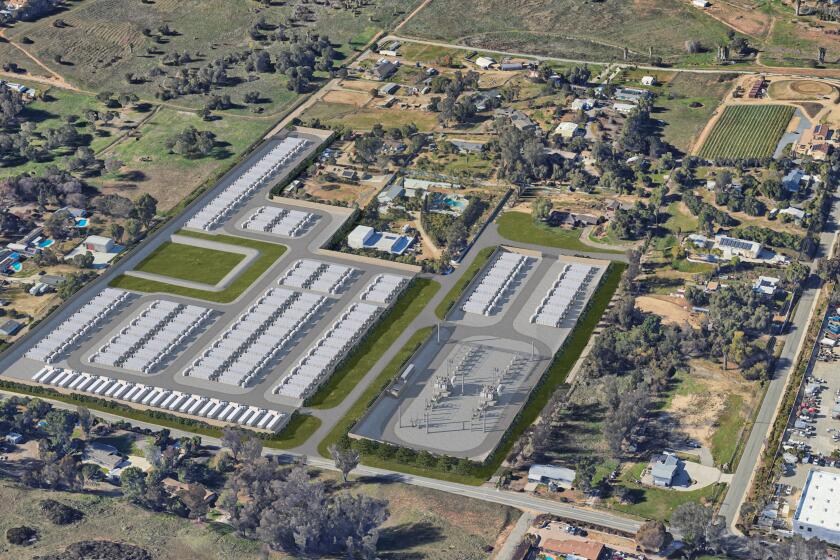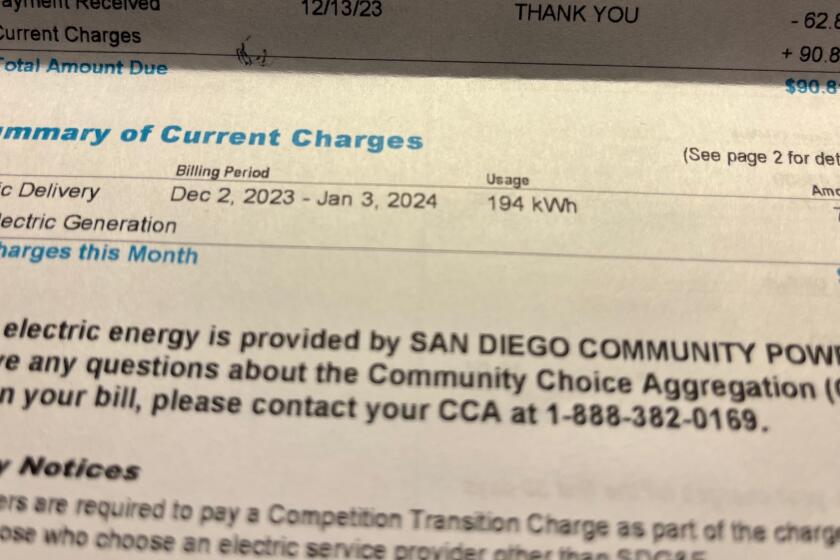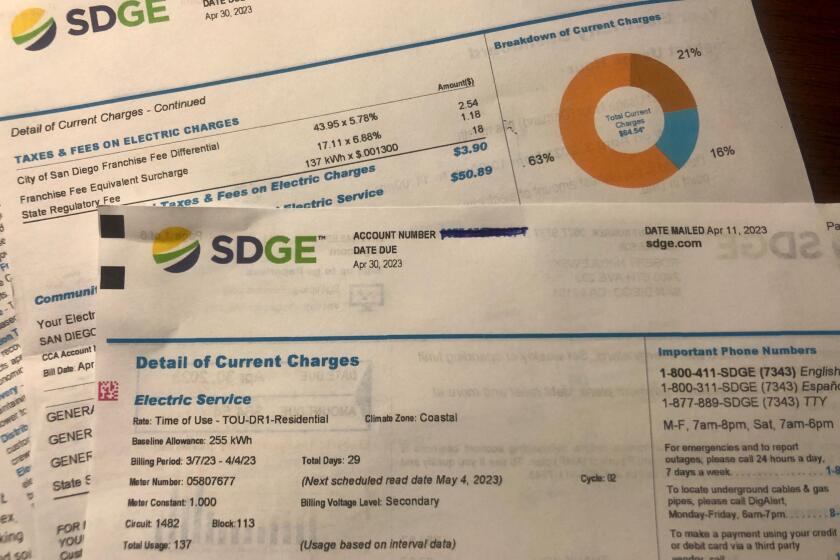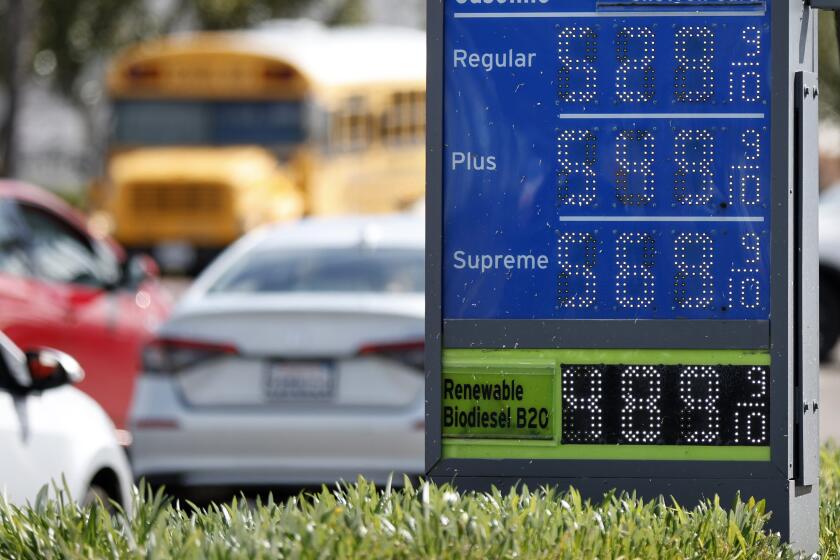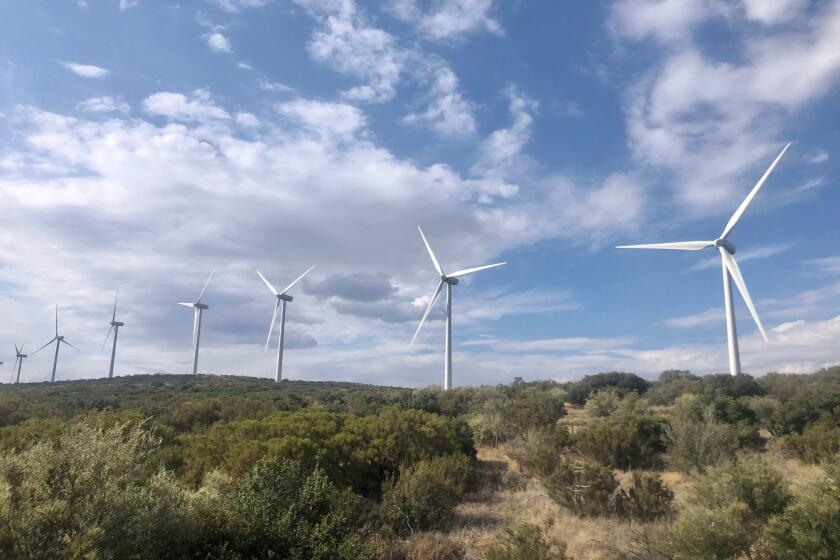Nuclear Regulatory Commission begins ‘special inspection’ of San Onofre nuclear station
A team of three inspectors from the Nuclear Regulatory Commission on Monday began what is expected to be a five-day review of how a 45-ton canister loaded with spent nuclear fuel ended up getting suspended 18 feet from the floor of a storage cavity at the San Onofre Nuclear Generating Station last month.
“We are reviewing the circumstances surrounding the incident,” NRC senior public affairs officer Victor Dricks said in a very brief email exchange with the Union-Tribune.
For the record:
11:00 a.m. Sept. 11, 2018An earlier version of this story mentioned the NRC was sending five inspectors to the San Onofore Nuclear Generating Station. The NRC said three inspectors will take part in the review.
Tom Palmisano, vice president of decommissioning and chief nuclear operator of the plant, Southern California Edison, said, “We welcome the inspection.”
The incident occurred Aug. 3 and was part of a larger program to move 73 canisters from what are called “wet storage” pools to a newly constructed “dry storage” facility within the premises of the plant that hugs the Pacific Ocean.

Workers at the plant use rigging and lifting equipment to insert the heavy canisters into 20-foot cavity enclosures at the dry storage site. On Aug. 3, a canister inadvertently ended up resting on an inner ring of the cavity but workers did not realize it until an oversight team recognized the mistake.
Eventually, the canister was lowered safely. Palmisano has insisted the incident posed no danger to workers or the general public, saying the “very robust design” of the canister would have prevented any radiological leak — even if it had fallen 18 feet.
But news of what was described as a “near-miss” did not come to light until a man identifying himself as an industrial safety worker at the plant stood up at a quarterly meeting of the SONGS Community Engagement Panel and said the canister was “hanging by about a quarter inch.”
Palmisano later said he regretted not mentioning the incident earlier and has suspended all future transfers until the NRC inspection is complete and all handling practices meet his satisfaction.
Twenty-nine canisters have been transferred to the new dry storage facility. Edison plans to complete the transfer of the remaining 44 canisters by the middle of next year.
It’s unclear exactly how long the canister was suspended atop the cavity’s inner ring. Initial reports said 20 minutes but in a memo, the NRC said the canister was in “an unanalyzed drop condition” for about 45 minutes to an hour. In an email Monday, Edison said pinning down a specific amount of time is still being evaluated.
Among the things the inspectors will review:
- documents, records and procedures related to the Aug. 3 incident
- personnel involved
- the investigation conducted by Edison into the root cause of the incident
Dave Lochbaum, director of the Nuclear Safety Project at the Union of Concerned Scientists, is a nuclear engineer who worked at the NRC for one year. He said the agency will look to make sure Edison and its contractors are following protocol while also keeping an eye on what lessons other nuclear facilities with similar storage sites may learn from the incident.
What can the NRC do if it is unhappy with the job plant operators are doing?
“At a typical plant, you can’t restart until the NRC is happy,” Lochbaum said. “But at San Onofre, that’s not a leverage tool” because the plant is no longer producing electricity. “But (Edison) does have a plan for decommissioning the plant and the further behind they get on the schedule, that tends to drive costs up … There is a lot of work not being done right now (at the plant) while this review goes on.”
Public Watchdogs, a San Diego-based advocacy group, criticized the NRC for not conducting its own investigation into the Aug. 3 and not sending its inspection team to SONGS earlier.
“We are deeply disturbed that it took more than a month for the NRC to put boots on the ground,” Nina Babiarz, public advocate for Public Watchdogs said. “What are we paying them for?”
Public Watchdogs wanted the NRC to allow the organization to watch this week’s inspection but the NRC turned down the request.
“It is not the policy of the NRC to permit members of the public to accompany NRC staff during inspections,” Dricks said.
The NRC expects to issue the results of its inspection in four to six weeks.
The Aug. 3 incident marked the second involving spent fuel transfers at SONGS this year.
In March, work was delayed 10 days after it was discovered a piece of shim — essentially, a pin 4 inches by a half-inch — came loose while a canister, designed by New Jersey-based Holtec International, was being loaded. Edison received assurance from Holtec and an independent engineering firm that the canister’s integrity was sound.
Business
rob.nikolewski@sduniontribune.com
(619) 293-1251 Twitter: @robnikolewski
Get U-T Business in your inbox on Mondays
Get ready for your week with the week’s top business stories from San Diego and California, in your inbox Monday mornings.
You may occasionally receive promotional content from the San Diego Union-Tribune.


